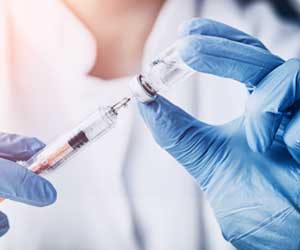Mechanosignaling pathway’s molecular mechanism by which progenitor cells differentiate into endocrine or duct cells in the pancreas has been discovered. This could lead to development of replacement therapy for type-1 diabetes.
- The molecular mechanism of the mechanosignaling pathway has been discovered
- This is responsible for the differentiation of progenitor cells into either endocrine or duct cells in the developing pancreas
- Modulation of this pathway by targeting it with novel drug molecules can preferentially lead to the production of endocrine cells that secrete insulin
- This could be a cheap and robust method for producing insulin-secreting β-cells, which could be used for replacement therapy in type-1 diabetes
Read More..
What Has Been the Research Focus So Far?
Current research focuses on replacement therapies to generate insulin-producing pancreatic β-cells from human pluripotent stem cells. So far, strategies to engineer specialized cells from pluripotent stem cells have been largely based on empirical approaches.What Has the New Study Added?
The new study has found the signaling mechanism responsible for determining whether the progenitor cells of the pancreas will differentiate into insulin-secreting β-cells or duct cells. In this regard, Semb said: “The cells are analogous to pinballs, whose ultimate score is based on the sum of pin encounters. They are constantly moving around within the developing pancreas, leading to frequent environmental changes. We show that the exposure to specific extracellular matrix components determines the ultimate destiny of the cells.”Extracellular Matrix Determines Differentiation of Progenitor Cells: Progenitor cells, like stem cells, can undergo self-renewal and differentiation into mature cell types. However, their capacity of self-renewal is not as robust as that of stem cells. During organ formation, the progenitor cells are difficult to study due to their dynamic behavior.
To overcome this difficulty, the researchers spotted these human stem cell-derived progenitor cells onto glass slides, micropatterned with various matrix proteins. This enabled the study of the interactions between the progenitor cells with the different matrix proteins, without any interference from the neighboring cells, thus simulating the real-life scenario of how the progenitor cells interact with their surroundings.
“This enabled us to discover something very surprising. Our investigation revealed that interactions with different extracellular matrix components change the mechanical force state within the progenitor. These forces result from interactions between the extracellular matrix, which is outside the cell, and the actin cytoskeleton, which is within the cell,” said Semb.
Mechanism of Mechanosignaling
The pancreas is made up of two types of cells – endocrine and epithelial. The endocrine cells are present in the islets of Langherans. These include the insulin-secreting β-cells and the glucagon-secreting α-cells. On the other hand, the epithelial cells line the walls of the ducts, which carry the pancreatic fluids, containing the hormones and digestive enzymes, into the gut.In the present study, it was shown that exposure to the extracellular matrix protein laminin led the progenitor cells to differentiate into endocrine cells, due to reduced mechanical forces within the cells. On the contrary, exposure to fibronectin led the progenitor cells to differentiate into duct cells due to increased mechanical forces. This is the basis of the mechanosignaling mechanism discovered by Semb and his group.
Molecular Pathway of Mechanosignaling
The molecular pathway involved in mechanosignaling was deciphered by the lead authors Anant Mamidi and Christy Prawiro. They showed that the extracellular matrix proteins exploit an integrin receptor present on the cell surface to send a signal into the cell.This results in changes in the mechanical forces within the cell, which are transmitted by the actin proteins making up the cytoskeleton. These forces are sensed by an intracellular protein called the ‘Yes-associated protein (YAP)’ which switches “on” or “off” specific genes.
This molecular signaling cascade is responsible for the differentiation of the progenitor cells into either endocrine or duct cells. This mechanosignaling pathway has been validated in vivo to establish its physiological relevance during the development of the pancreas.
Implications of the Study
The study findings will enable the replacement of many existing empirically-derived substances whose mechanism of action in progenitor cell differentiation is unknown, with well-defined molecular inhibitors that can specifically target the components of the newly discovered mechanosignaling pathway.Concluding Remarks
The new approach will enable the cost-effective and more robust production of insulin-producing pancreatic β-cells from human pluripotent stem cells for the treatment of diabetes. “Our discovery breaks new ground because it explains how multipotent progenitor cells mature into different cell types during organ formation”, Semb said. “It also gives us the tools to recreate the processes in the laboratory, to more precisely engineer cells that are lost or damaged in severe diseases, such as type-1 diabetes and neurodegenerative diseases, for future cell replacement therapies.”Reference:
- Mechanosignalling via integrins directs fate decisions of pancreatic progenitors - (http://dx.doi.org/10.1038/s41586-018-0762-2)
Source-Medindia
















